
The Timeless Charm of Charleston's French Quarter
Discover the French Quarter in Charleston: a delightful mix of historic charm, cultural richness, and vibrant nightlife, offering a unique experience for every visitor.
Nestled in the heart of Charleston, South Carolina, the French Quarter is a delightful blend of historic elegance and vibrant culture. This charming neighborhood is a must-visit for any traveler, offering a glimpse into the city's rich past while also providing a lively present-day atmosphere. Cobblestone streets, centuries-old buildings, and picturesque courtyards transport visitors back in time, making every stroll through this area a journey through history. The French Quarter is home to some of Charleston's most iconic landmarks. The Old Slave Mart Museum offers a sobering but essential look into the city's history, while the Dock Street Theatre, America’s first theatre, continues to enchant audiences with its performances. Art enthusiasts will find a haven in the numerous galleries that line the streets, showcasing both traditional and contemporary works. Foodies will rejoice in the French Quarter's culinary offerings. From elegant fine dining establishments to cozy cafes, the neighborhood boasts a variety of eateries that highlight Lowcountry cuisine. Don't miss the chance to savor fresh seafood, traditional Southern dishes, and innovative culinary creations. In addition to its historical and cultural attractions, the French Quarter is also known for its vibrant nightlife. Trendy bars and live music venues offer a perfect way to unwind after a day of exploration. Whether you're interested in history, art, food, or entertainment, the French Quarter has something for everyone.
Local tips in French Quarter
- Wear comfortable shoes; the cobblestone streets can be tricky to navigate.
- Visit the Old Slave Mart Museum early in the day to avoid crowds.
- Make reservations in advance for popular restaurants, especially on weekends.
- Check the schedule at the Dock Street Theatre for any performances during your stay.
- Explore the art galleries on a weekday when they are less crowded.
The Timeless Charm of Charleston's French Quarter
Nestled in the heart of Charleston, South Carolina, the French Quarter is a delightful blend of historic elegance and vibrant culture. This charming neighborhood is a must-visit for any traveler, offering a glimpse into the city's rich past while also providing a lively present-day atmosphere. Cobblestone streets, centuries-old buildings, and picturesque courtyards transport visitors back in time, making every stroll through this area a journey through history. The French Quarter is home to some of Charleston's most iconic landmarks. The Old Slave Mart Museum offers a sobering but essential look into the city's history, while the Dock Street Theatre, America’s first theatre, continues to enchant audiences with its performances. Art enthusiasts will find a haven in the numerous galleries that line the streets, showcasing both traditional and contemporary works. Foodies will rejoice in the French Quarter's culinary offerings. From elegant fine dining establishments to cozy cafes, the neighborhood boasts a variety of eateries that highlight Lowcountry cuisine. Don't miss the chance to savor fresh seafood, traditional Southern dishes, and innovative culinary creations. In addition to its historical and cultural attractions, the French Quarter is also known for its vibrant nightlife. Trendy bars and live music venues offer a perfect way to unwind after a day of exploration. Whether you're interested in history, art, food, or entertainment, the French Quarter has something for everyone.
Iconic landmarks you can’t miss
Joe Riley Waterfront Park
Discover the tranquil beauty of Joe Riley Waterfront Park, Charleston's waterfront oasis with stunning views and lush landscapes.

Old Exchange and Provost Dungeon
Explore the rich history of Charleston at the Old Exchange and Provost Dungeon, a captivating museum filled with stories of the past.

Nathaniel Russell House
Explore the Nathaniel Russell House, a stunning historical museum in Charleston showcasing Federal-style architecture and rich local heritage.
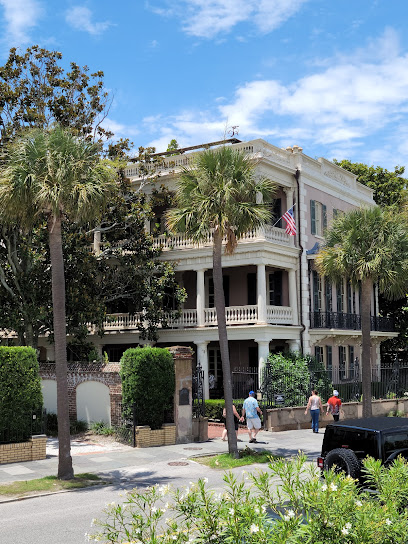
Washington Square
Discover the historic charm and serene beauty of Washington Square, a beloved park in Charleston's French Quarter, where history and nature meet.
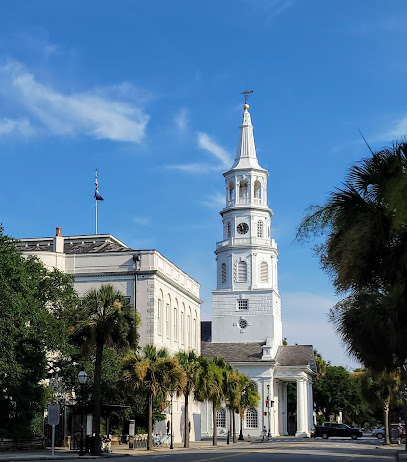
Heyward-Washington House
Discover the rich history and architectural beauty of the Heyward-Washington House, a must-visit historical landmark in Charleston, South Carolina.

Powder Magazine
Explore Charleston's history at Powder Magazine, a must-visit historical museum showcasing South Carolina's rich heritage and captivating artifacts.
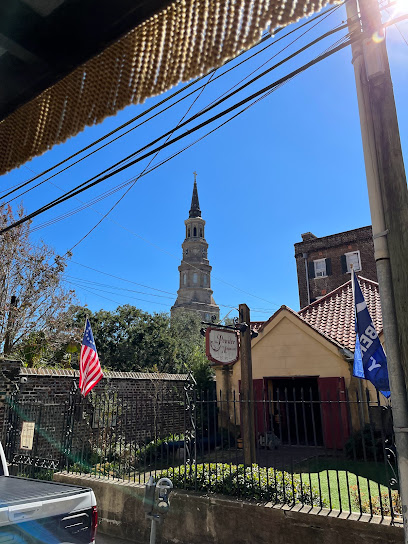
French Quarter District
Explore the historic charm of the French Quarter District in Charleston, where stunning architecture meets vibrant culture and rich heritage.
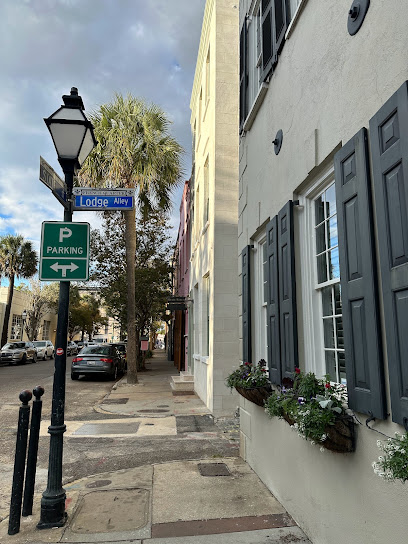
Unmissable attractions to see
Old Slave Mart Museum
Explore the Old Slave Mart Museum in Charleston to uncover the profound history of the transatlantic slave trade and its enduring legacy in America.

Old Exchange and Provost Dungeon
Explore the Old Exchange and Provost Dungeon in Charleston, SC, where history comes alive through captivating exhibits and engaging stories from the past.

Washington Square
Discover the serene beauty of Washington Square, Charleston's historic park, perfect for relaxation and local exploration in the heart of the French Quarter.
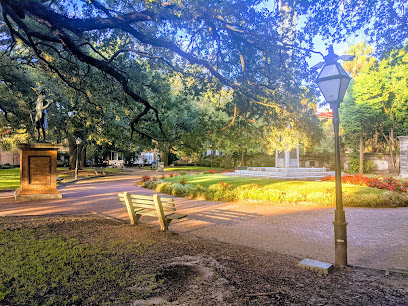
Walks of Charleston
Discover the stories of Charleston's past with expert-led walking tours that navigate the city's historic charm and vibrant culture.
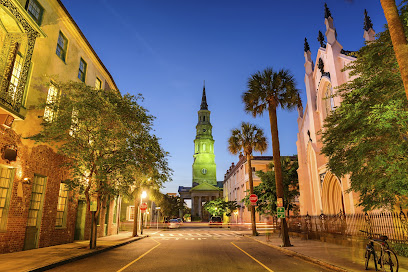
South Carolina Historical Society
Uncover the fascinating history of South Carolina at the South Carolina Historical Society, an educational gem in the heart of Charleston's French Quarter.
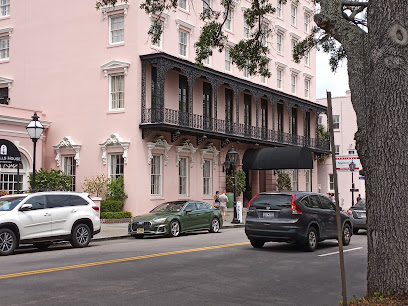
Essential places to dine
Fleet Landing Restaurant & Bar
Experience fresh seafood and breathtaking waterfront views at Fleet Landing Restaurant & Bar in Charleston, SC—perfect for families and food lovers.
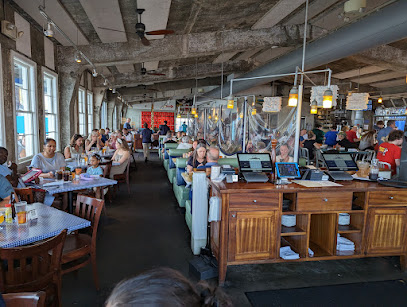
Poogan's Porch
Discover authentic Southern flavors at Poogan's Porch in Charleston - a charming brunch restaurant steeped in history and local tradition.
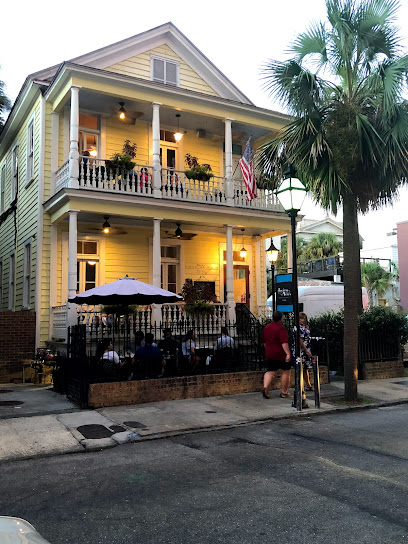
Magnolias
Discover the best of Southern cuisine at Magnolias in Charleston - where tradition meets innovation in every exquisite dish.
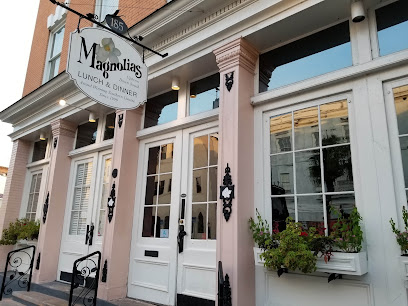
Church and Union Charleston
Experience exceptional American cuisine at Church and Union Charleston - where every meal is a celebration of flavor and hospitality.
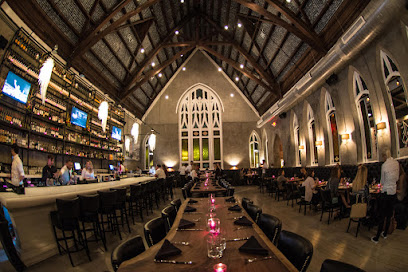
High Cotton Charleston Restaurant
Experience Southern culinary excellence at High Cotton Charleston – where fresh seafood meets elegant dining in the heart of Charleston.
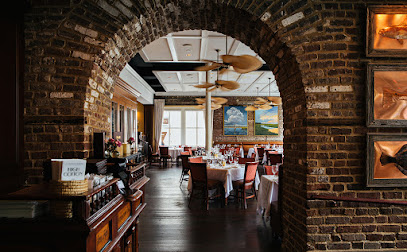
Slightly North of Broad Restaurant
Experience Southern-inspired American cuisine at Slightly North of Broad in Charleston's French Quarter - where every dish tells a story.
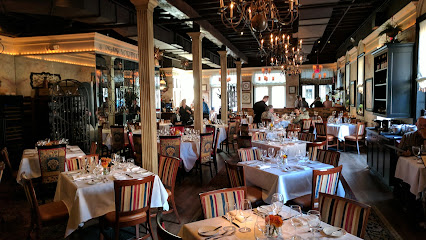
Iron Rose
Discover the culinary delights at Iron Rose in Charleston - where local flavors meet modern dining in an inviting atmosphere.
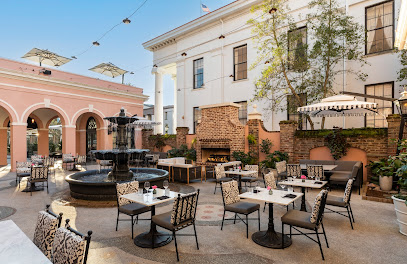
Amen Street Fish & Raw Bar
Experience Charleston's coastal charm at Amen Street Fish & Raw Bar - a seafood haven with fresh catches and Southern flair.
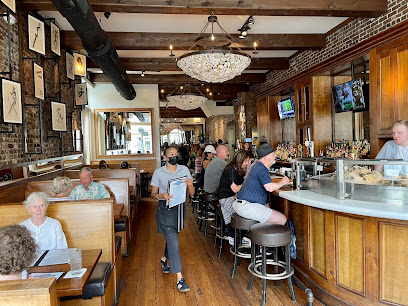
The Establishment
Discover exquisite seafood dining at The Establishment in Charleston's historic French Quarter, where local flavors meet Southern hospitality.
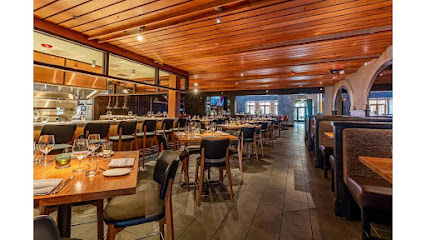
Brasserie La Banque
Experience the charm of French cuisine at Brasserie La Banque in Charleston - where elegance meets culinary artistry.
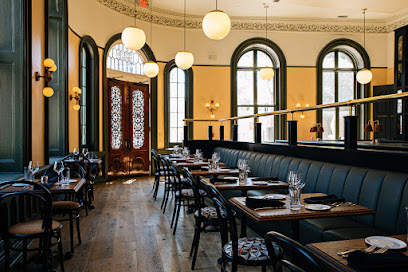
Markets, malls and hidden boutiques
Charleston City Market
Explore the historic charm of Charleston City Market, where local artisans showcase handmade crafts and delicious Southern cuisine in a vibrant atmosphere.
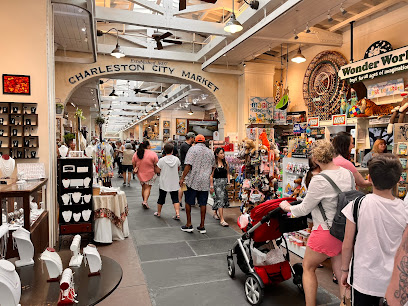
The Shops at The Charleston Place
Discover luxury shopping at The Shops at The Charleston Place, offering unique boutiques and a taste of Southern elegance in the heart of Charleston.
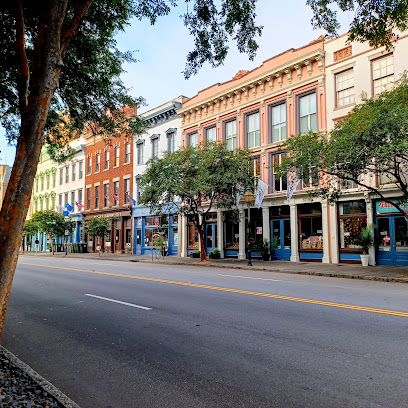
My Sister's Cottage
Explore My Sister's Cottage, a unique boutique in Charleston offering fashion accessories, gifts, and home goods with Southern flair.
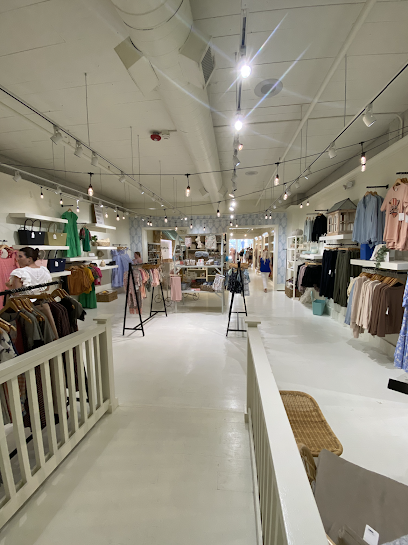
Sheila's Shamrock
Explore Sheila's Shamrock in Charleston for unique souvenirs, local gifts, and delightful toys that embody the spirit of the Lowcountry.
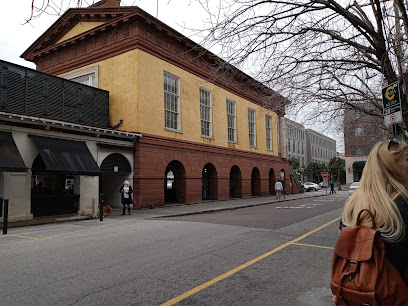
N’fes Handcrafted leater & Gift Market
Explore the charm of N’fes Handcrafted Leather & Gift Market in Charleston, where unique artisanal gifts and handcrafted leather goods await every visitor.
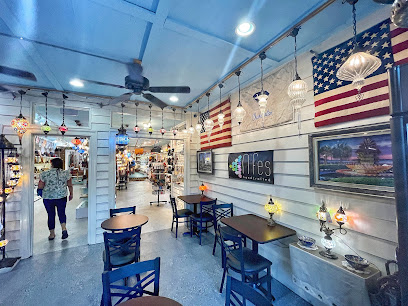
Noddy Charleston
Explore Noddy Charleston for unique gifts and home goods that embody the charm and elegance of the South.
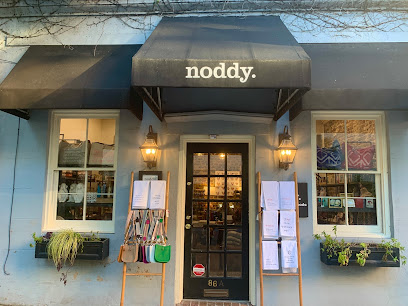
Best Gift Idea Ever
Shop unique souvenirs and local art at Best Gift Idea Ever in Charleston's French Quarter, where creativity and charm meet.
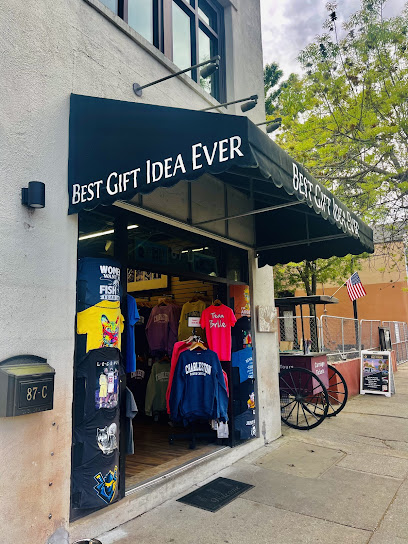
Crabby Jack's General Store
Explore the quirky offerings of Crabby Jack's General Store, a Charleston treasure filled with local goods and Southern charm in the French Quarter.
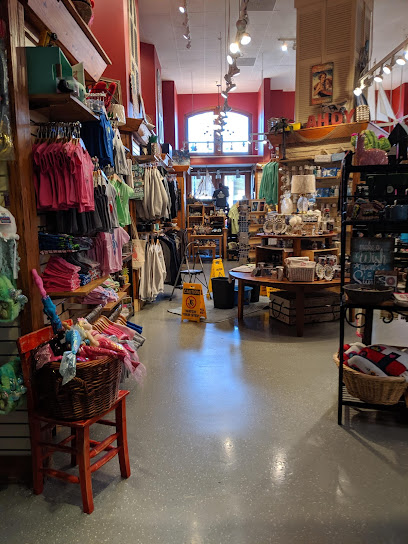
The Boutique Charleston
Explore The Boutique Charleston for exquisite gifts, bridal essentials, and unique chinaware in the heart of historic Charleston.
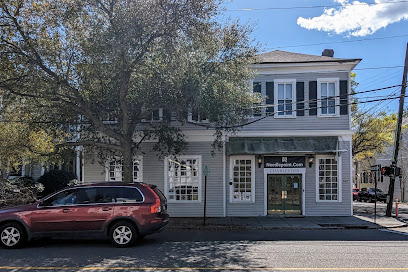
Shore Thing
Discover Charleston's Shore Thing - where coastal style meets modern fashion in a charming clothing store.
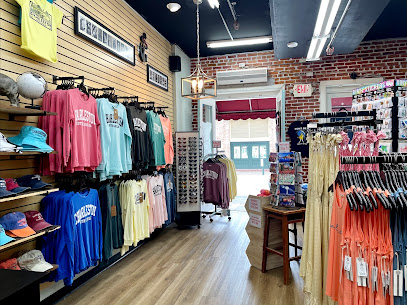
Essential bars & hidden hideouts
The Griffon
Discover The Griffon, a vibrant American pub in Charleston's historic French Quarter, where great food and Southern hospitality meet.
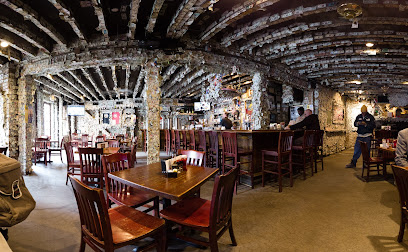
Blind Tiger Pub
Discover Charleston's Blind Tiger Pub: A Historic Gem Blending Southern Charm with Delicious Food and Craft Cocktails.
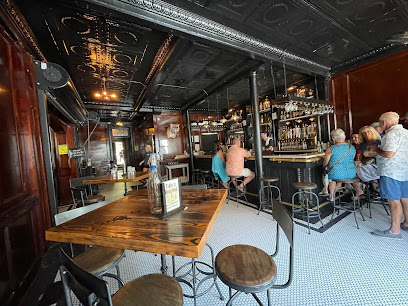
Tommy Condon's Irish Pub & Restaurant
Discover the heart of Ireland in Charleston with delicious food, live music, and a pub atmosphere at Tommy Condon's Irish Pub & Restaurant.
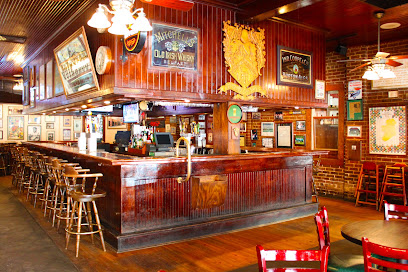
Prohibition
Discover Prohibition in Charleston: A cocktail bar blending history, live music, and delectable cuisine for an unforgettable nightlife experience.
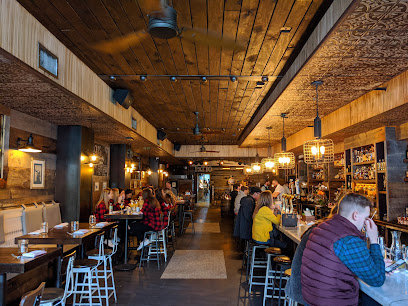
The Rooftop at the Vendue
Discover stunning views and delightful American cuisine at The Rooftop at the Vendue, the perfect spot for a memorable dining experience in Charleston.
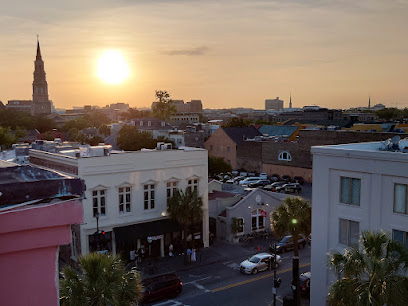
Henry's On The Market
Experience the vibrant nightlife and culinary delights of Henry's On The Market, a top bar and restaurant in Charleston, South Carolina.
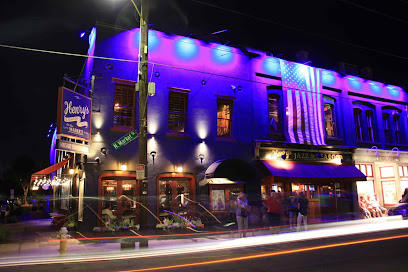
The Gin Joint
Discover the exquisite mixology at The Gin Joint, where Charleston's cocktail culture comes alive with innovative flavors and a cozy atmosphere.
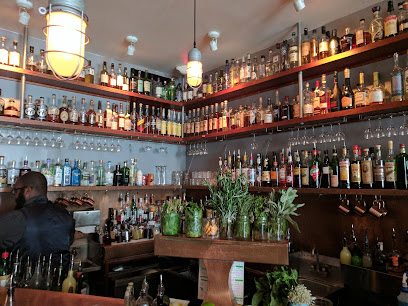
Bumpa's
Experience the unique flavors of Charleston at Bumpa's, a premier gastropub in the heart of the French Quarter, offering gourmet dining and craft cocktails.
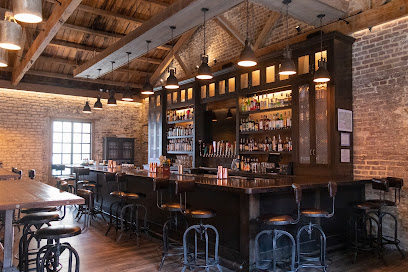
Last Saint
Experience the essence of Charleston nightlife at Last Saint, where innovative cocktails and a welcoming atmosphere await every visitor.
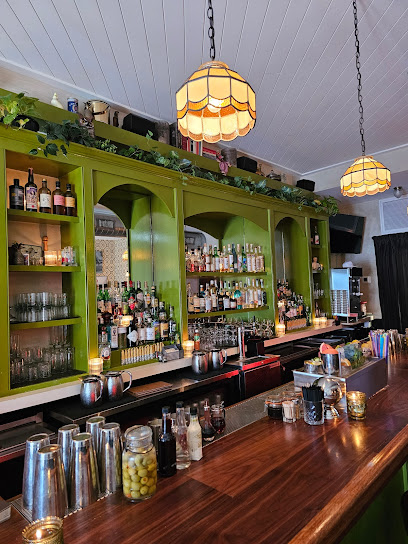
The Bar at The Spectator
Discover sophistication and charm at The Bar at The Spectator, a premier destination for exquisite cocktails in Charleston's French Quarter.
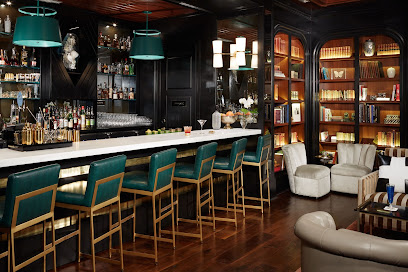
Local Phrases
-
- HelloHowdy
[haw-dee] - GoodbyeSee ya
[see yuh] - YesYup
[yuhp] - NoNah
[nuh] - Please/You're welcomePlease/You're welcome
[plee-z/yur wel-kum] - Thank youThanks
[thanks] - Excuse me/SorryPardon
[par-dun] - How are you?How y'all doin'?
[haw yahl doo-in] - Fine. And you?Fine. And y'all?
[fahyn. and yahl] - Do you speak English?Y'all speak English?
[yahl speek ing-glish] - I don't understandI ain't got a clue
[I ent got uh cloo]
- HelloHowdy
-
- I'd like to see the menu, pleaseI'd like to see the menu, please
[I'd like tuh see the menu, pleez] - I don't eat meatI don't eat meat
[I don't eat meet] - Cheers!Cheers!
[cheers] - I would like to pay, pleaseI would like to pay, please
[I would like tuh pay, pleez]
- I'd like to see the menu, pleaseI'd like to see the menu, please
-
- Help!Help!
[Help] - Go away!Git outta here!
[Git out-ta here] - Call the Police!Call the Sheriff!
[Call the Sheriff] - Call a doctor!Call the doc!
[Call the doc] - I'm lostI'm turned around
[I'm turned around] - I'm illI'm feelin' poorly
[I'm feelin' poorly]
- Help!Help!
-
- I'd like to buy...I reckon I'll buy...
[I reckon I'll buy] - I'm just lookingI'm just lookin'
[I'm just look-in] - How much is it?How much is it?
[How much is it] - That's too expensiveThat's too pricey
[That's too pricey] - Can you lower the price?Can y'all cut the price?
[Can yahl cut the price]
- I'd like to buy...I reckon I'll buy...
-
- What time is it?What time is it?
[What time is it] - It's one o'clockIt's one o'clock
[It's one o'clock] - Half past (10)Half past (10)
[Half past (10)] - MorningMornin'
[Mornin] - AfternoonAfternoon
[Afternoon] - EveningEvenin'
[Evenin] - YesterdayYest'day
[Yest'day] - TodayToday
[Today] - TomorrowTomorrah
[Tomorrah] - 1One
[One] - 2Two
[Two] - 3Three
[Three] - 4Four
[Four] - 5Five
[Five] - 6Six
[Six] - 7Seven
[Seven] - 8Eight
[Eight] - 9Nine
[Nine] - 10Ten
[Ten]
- What time is it?What time is it?
-
- Where's a/the...?Where's a/the...?
[Where's a/the] - What's the address?What's the address?
[What's the address] - Can you show me (on the map)?Can you show me (on the map)?
[Can you show me (on the map)] - When's the next (bus)?When's the next (bus)?
[When's the next (bus)] - A ticket (to ....)A ticket (to ....)
[A ticket (to ....)]
- Where's a/the...?Where's a/the...?
History of French Quarter
-
The French Quarter, one of Charleston's oldest neighborhoods, was established in the late 17th century. Initially settled by French Huguenots escaping religious persecution, this area became a hub of commerce and culture. The architectural styles of the buildings, many of which still stand today, reflect the French influence that persisted through the centuries.
-
In the 18th century, the French Market became a central point of trade in Charleston, providing a space for local farmers and artisans to sell their goods. This market was pivotal in fostering the local economy and served as a gathering point for the community, helping to shape the cultural identity of the French Quarter.
-
The French Quarter is renowned for its historical architecture, characterized by narrow streets and antebellum buildings. Notable structures include St. Philip's Church, built in 1680, which showcases the colonial craftsmanship and the significance of religion in the community. The preservation of these structures has earned the neighborhood recognition as a National Historic Landmark District.
-
Throughout the 19th century, the French Quarter hosted a diverse population, including free blacks, artisans, and European immigrants. This mix of cultures contributed to Charleston’s rich tapestry of traditions, music, and cuisine, leading to the development of unique local customs that still thrive today, such as Gullah culture.
-
The French Quarter played a strategic role during the Civil War, with many buildings serving as headquarters for Confederate troops. Following the war, the area underwent significant changes during the Reconstruction era, as the community adapted to new social dynamics and economic challenges, reshaping its cultural landscape.
-
In recent decades, the French Quarter has experienced a renaissance, with a focus on tourism, arts, and preservation. The neighborhood is now home to numerous galleries, theaters, and restaurants, attracting visitors eager to explore its vibrant history while engaging with the contemporary cultural scene of Charleston.
French Quarter Essentials
-
The French Quarter is centrally located in Charleston, making it accessible from other neighborhoods. If you're coming from the airport, take a taxi or rideshare service for a convenient 20-minute journey. If you're already in the downtown area, walking is a great option, as the French Quarter is pedestrian-friendly. Alternatively, consider using the DASH (Downtown Area Shuttle) which is free and connects various neighborhoods, including the French Quarter.
-
The French Quarter is best explored on foot due to its compact size and charming cobblestone streets. Bicycle rentals are available through local shops, and several guided bike tours operate in the area. Although public transportation options like buses are available, they may not be as convenient for tourists. For longer distances, taxis and rideshare services like Uber and Lyft are widely available.
-
The French Quarter is generally safe for tourists, but standard precautions should be taken. Avoid walking alone late at night in less crowded areas, particularly near the outskirts of the Quarter. Be cautious of pickpockets in crowded spaces, especially during events. Areas such as the outskirts of East Bay Street may have higher crime rates, so remain vigilant.
-
In case of an emergency, dial 911 for police, fire, or medical assistance. The nearest hospital is MUSC Health, located a short distance away. Make sure to have travel insurance that covers emergencies. For non-urgent health issues, local pharmacies can provide over-the-counter medications.
-
Fashion: Do wear comfortable shoes for walking; don’t wear overly casual attire when dining in upscale restaurants. Religion: Do respect local customs when visiting churches; don’t take photos inside unless permitted. Public Transport: Do be courteous to fellow passengers; don’t engage in loud conversations. Greetings: Do greet locals with a friendly smile; don’t assume familiarity. Eating & Drinking: Do try Lowcountry specialties; don’t waste food or leave a table without asking if the meal was satisfactory.
-
To experience the French Quarter like a local, visit the City Market for artisanal goods and local crafts. Check out smaller, lesser-known restaurants for authentic Lowcountry cuisine away from tourist traps. Engage with local artists and musicians who often perform in the area. For a unique experience, consider taking a historic ghost tour to learn about the city's haunted past while enjoying its nighttime ambiance.
Nearby Cities to French Quarter
-
Things To Do in North Charleston
-
Things To Do in Summerville
-
Things To Do in Beaufort
-
Things To Do in Hilton Head Island
-
Things To Do in Myrtle Beach
-
Things To Do in Aiken
-
Things To Do in Rock Hill
-
Things To Do in Fort Mill
-
Things To Do in Fayetteville
-
Things To Do in Charlotte
-
Things To Do in Spartanburg
-
Things To Do in Mauldin
-
Things To Do in Anderson
-
Things To Do in Jacksonville
-
Things To Do in Greer











